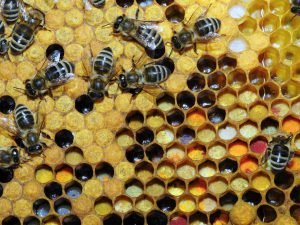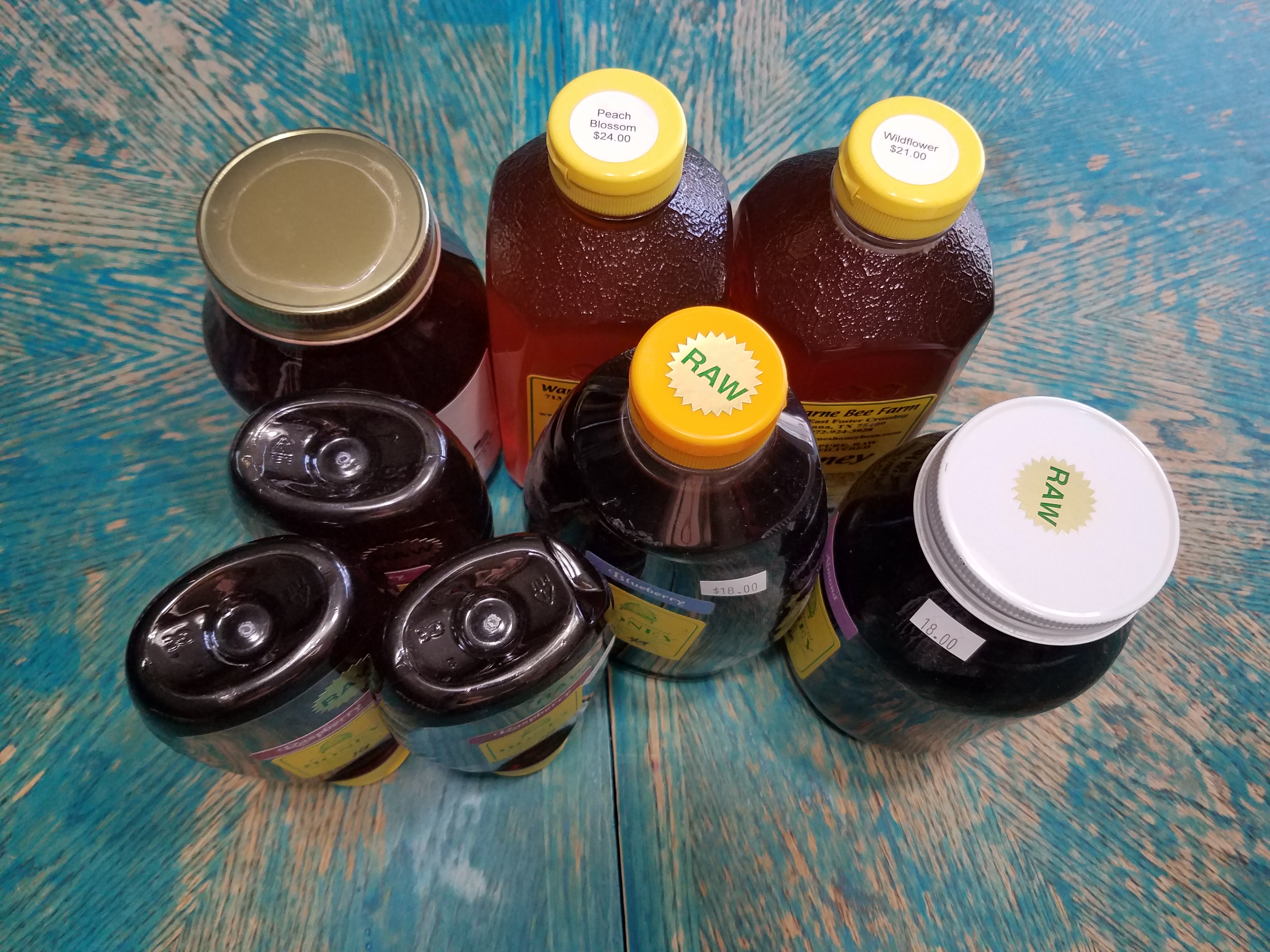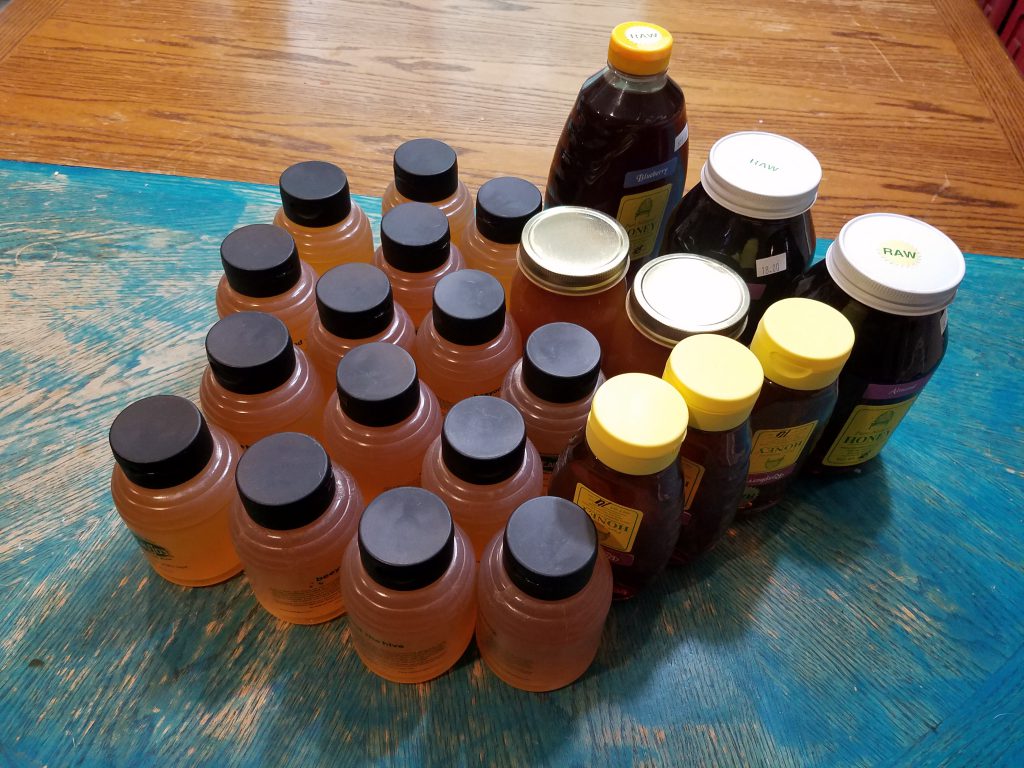My table is set for a feast! If you’re a single celled organism known as yeast! But you’re not, are you? Maybe you’re a bee? Or a bear? No? That doesn’t mean you like honey any less, although you may not do the same thing with it.
First, a bit about yeast
In any brewing situation, it is the yeast that is consuming your fermentable sugars, and converting it to both alcohol and carbon dioxide. The carbon dioxide is what helps your bread rise while the alcohol is what makes your beer/mead/wine/cider/liquor alcoholic. There are over a thousands species of yeast and different species can impart different flavors to your beverage, as well as controlling the alcohol content, but that conversation is for another time.
Back to the Honey! From their mouth to yours…
Where does honey come from?
I’ve heard honey called bee-vomit. That is not very far from the truth. Bees travel from flower to flower to hive, (with an occasional stop at a tree to collect propolis), collecting nectar and pollen. The pollen attaches itself to something called a pollen basket, or corbicula, on the hind legs of some species of bees, and is a rich source of protein for the hive, while the nectar is stored in a second stomach. Quick fact: the bee can open a valve in this second stomach and transfer some of the nectar into her other stomach if she gets hungry mid flight! This nectar is then brought back to the hive where it is regurgitated and either passed to another bee and then passed mouth to mouth, with each pass reducing the amount of moisture in the nectar, or it is stored in the honeycomb, where the internal temperature of the hive (around 90° F) will cause evaporation to take place. Once the moisture content is sufficiently low (around 20%) the liquid, now honey, is stored in capped cells to be used later for food. Yes, from there mouths to yours…
Nectar huh?
Just like every variety of flower has its own scent and color, the nectar, and therefore the honey from it, also has its own flavor. Buckwheat honey is earthy, orange blossom honey has citrus-y undertones. Honey from pepper blossoms has a bit of a bite while avocado blossom honey is buttery. These are not flavored honeys, but rather made by placing a beehive near a specific type of plant and allowing the bees to do their thing. Note the colors in the bottom right of the image below, that is pollen from different flowers!

How can you keep the bees only on the ______ blossoms
Short answer is you can’t, but the bees are going to, opportunistically, go to the closest flowers first, so by positioning hives accordingly, beekeepers can direct their bees where to go.
Local honey vs store bought
Chances are you’ve been down the aisle in the supermarket and seen the bears and jars labeled “honey” or clover honey. If you look at the label closely, you will see numerous countries of origin. This is honey produced all over the globe (except Antarctica) that is brought together and combined to get a uniform flavor profile and then sold globally to large chains and stores. If you know a beekeeper (or Apiarist) you can get probably get local honey from them. If it is labelled “wildflower” honey, the bees were not given a direction or a specific source, and just travelled to whatever flowers were plentiful. Otherwise the honey will be labelled with whatever the single (monofloral) source is, and it might go at a premium because of it.
Don’t the bees need this honey?
A single beehive produces, on average, twenty-five to thirty pounds of excess honey annually. That is above and beyond what they need to survive. Not taking that honey can actually cause problems… First off, as I alluded to earlier, twenty-five pounds of excess honey. That has to be stored somewhere. And if there is no room in their home for it, just like you or I would do if we outgrew our home, the bees move on. OR, they don’t move on. And they start to store the harvested honey in the cells they are supposed to be using to produce more bees. Without those cells, fewer and fewer new bees are produced and the whole hive can eventually weaken and die out. Most (I would love to put all, but, as in every walk of life, there are unscrupulous people here too) beekeepers have a good understanding of what their hives need and only take what the bees don’t.
Find yourself a beekeeper
And try whatever varieties they have, you’ll be amazed at how different this delicious liquid tastes in its different types!


Leave a Reply
You must be logged in to post a comment.